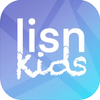Peaceful Activities to Keep a 3-Year-Old Calm and Engaged at Home
Understanding Your Toddler’s Need for Calm Engagement
When you have a 3-year-old at home, finding peaceful ways to keep them occupied can feel like a daily puzzle. At this age, children are naturally curious, energetic, and rapidly developing their cognitive and emotional skills. But not every moment needs to be a whirlwind of energy—some of the most meaningful growth happens during quiet moments of play and calm discovery. Whether you’re working from home, tending to chores, or simply need a breather, having a toolbox of calming activities can make all the difference.
The Magic of Simple, Sensory Play
One of the most soothing ways to engage a 3-year-old is by tapping into sensory activities. These pursuits often require minimal setup but offer rich opportunities for calm focus. Think of a bowl of dried rice and small toys for scooping and hiding, or a tray of shaving cream to draw shapes with fingers. Even something as straightforward as water play in the sink—with a few plastic containers and spoons—can become an absorbing, quiet-time favorite.
To ensure that these activities truly promote calmness, sit nearby and observe quietly rather than guiding every step. Often, toddlers settle most when they feel trusted to explore at their own pace.
Creative Play That Encourages Focus
Art materials such as crayons, washable markers, stickers, and paper can open the door to mindful moments. While a 3-year-old may not create recognizable artwork, the act of coloring, peeling stickers, or stamping shapes gives them control and purpose—essential elements for deep engagement. Try setting up an art corner with easy-access materials kept in rotating containers to maintain interest without overstimulation.
Another calm-inducing favorite is play dough. The rolling, squishing, and sculpting involved supports sensory regulation and imaginative exploration. Make your own at home with simple ingredients, or choose a few non-toxic colors and change them out weekly to keep the novelty alive.
Quiet Story Moments—More than Just Bedtime
Reading books together is a beloved quiet-time ritual, but it doesn’t always require your full attention. While shared reading is vital, there will be times when you need your hands free. This is where the LISN Kids App (also on Android) can be a wonderful companion. It offers age-appropriate audiobooks and original audio series for children as young as 3, giving toddlers the pleasure of stories without requiring screens or constant supervision.

Many parents find that incorporating audio stories into their child's daily rhythm—perhaps during snack time, after lunch, or while winding down in the afternoon—helps reduce overstimulation and promotes attention skills. To explore how stories can also teach valuable lessons beyond entertainment, you might enjoy this guide on using audio stories to build awareness.
Building Independent Play Skills
Calm activities aren’t just about keeping your child busy—they’re about helping them develop the ability to engage independently, even if for just a few minutes at a time. Start by creating a safe, inviting space with a few familiar toys: nesting cups, puzzles, simple building sets, or a themed basket (like animals or transportation). Stay nearby for the first few minutes, gradually reducing your active involvement as your child builds confidence.
This practice not only prepares your toddler for future solo play but also reduces dependency and supports emotional resilience. Many experts affirm that brief periods of boredom or solo exploration are essential for creative thinking.
The Importance of a Consistent, Gentle Routine
Predictability is a powerful tool for helping toddlers feel safe—and calmer throughout the day. Create a gentle rhythm that includes a mix of movement, rest, and focused activities. If your mornings are high-energy, mid-mornings might be the ideal window for quieter play. After lunch, dim the lights and play familiar audio stories or soft instrumental music while offering a calming activity like lacing beads or flipping through picture books.
As your child grows, you can adapt your routine to gently introduce digital tools. But this also comes with responsibilities. If you're curious about setting safe and age-appropriate boundaries around technology, this article explores the pros and cons of educational tech for young kids. It’s never too early to be thoughtful about screen time habits.
A Calm Home Is a Learning Home
Remember, the goal of calm activities isn't to eliminate excitement or noise—it’s about creating rhythms that allow you and your child moments of peace amid the busyness of daily life. Play isn’t just entertainment; it's your child’s work, their exploration, and their unfolding story. Whether they're molding dough, flipping through a board book, or completely absorbed in the voice of a storyteller, they are learning to listen, to imagine, to take turns—even if you're not actively involved every second.
And in the long run, those quiet spaces in your routine might just give both of you the reset you need to meet each day with more patience and connection.
If you're beginning to think about guiding your child’s digital journey from an early age, consider reading this thoughtful primer on digital responsibility or explore practical steps for online privacy—even small habits established early can go a long way later on.
